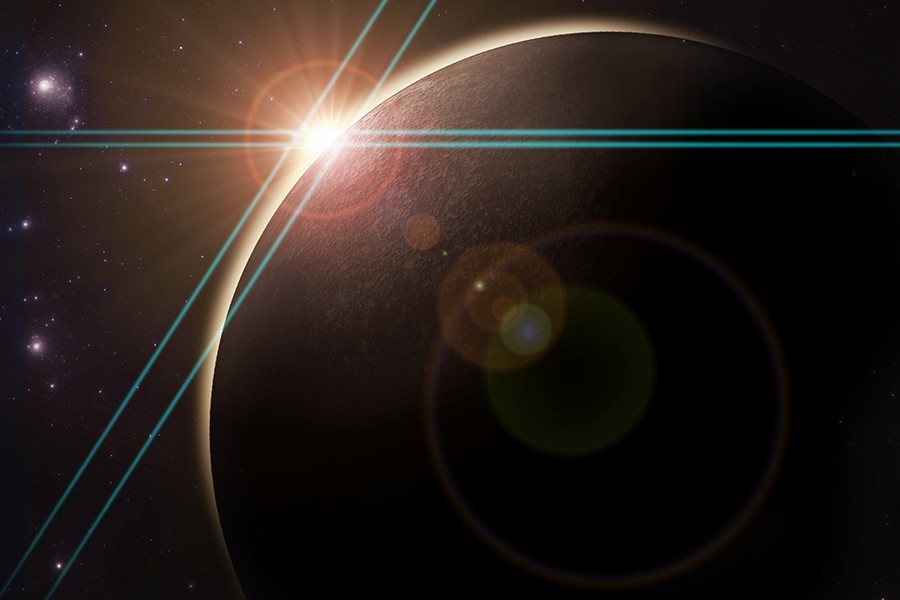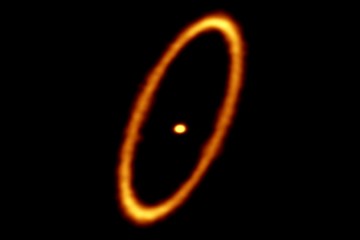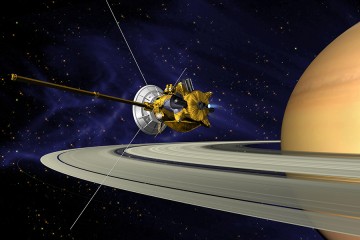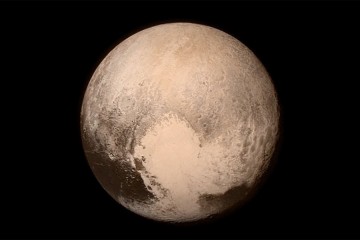A planet can be no bigger than about 10 times the mass of Jupiter, an astrophysicist has concluded.
Of course, that's pretty darned massive. Jupiter carries almost 318 times the mass of Earth, making the most massive planets possible the equivalent of nearly 3,200 Earths.
Most of the public controversy about the definition of a planet has focused on Pluto, which weighs in at only about 0.2 percent of Earth's mass. Johns Hopkins University astrophysicist Kevin Schlaufman is interested in what can or cannot be called a planet at the other end of the mass scale.
"While we think we know how planets form in a big-picture sense, there's still a lot of detail we need to fill in," Schlaufman said. "An upper boundary on the masses of planets is one of the most prominent details that was missing."
In his paper, published online by the Astrophysical Journal, Schlaufman set the upper boundary of planet mass between four and 10 times Jupiter's mass. Narrowing down the limit to something in that range is now possible primarily because of improvements in the technology and technique of astronomical observation, Schlaufman said. We have recently discovered many more planetary systems, he said, and can now see patterns we could not before.
The new conclusion comes from observations of 146 solar systems, almost all measured in a uniform way, he said. The data are more consistent from one solar system to the next, and so are more reliable.
Schlaufman's aim was to help distinguish between giant planets and celestial objects called brown dwarfs. The latter are generally more massive than planets, but less so than the smallest stars. They are thought to form as stars do.
For decades, brown dwarfs posed a problem for scientists: how to distinguish low-mass brown dwarfs from especially massive planets? Mass alone isn't enough to tell the difference, Schlaufman said. Some other property was needed to help draw the line.
In Schlaufman's new argument, the missing property is the chemical makeup of a planetary system's sun. He says you can know a planet not just by its size, but also by the company it keeps. Giant planets are almost always found orbiting stars that are metal-rich. Brown dwarfs are not so discriminating.
That is where his argument engages the idea of planet formation. Gas giant planets like Jupiter are formed from the bottom up, first building a rocky core that is subsequently enshrouded in a massive gaseous envelope. It stands to reason that they would be found near stars heavy with elements that go into making rocks, as those elements provide the seed material for planet formation.
Brown dwarfs and stars form from the top down, as clouds of gas collapse under their own weight.
Schlaufman's idea was to find the mass at which objects stop "caring" about the composition of the star they orbit. He found that objects more massive than about 10 times the mass of Jupiter do not prefer stars with lots of elements that make rocks; they are, therefore, are unlikely to form like planets.
While it's possible that new data could change things, Schlaufman said, he has proposed that objects in excess of 10 Jupiter masses should be considered brown dwarfs, not possible planets.
Posted in Science+Technology
Tagged astrophysics, physics and astronomy, outer space











